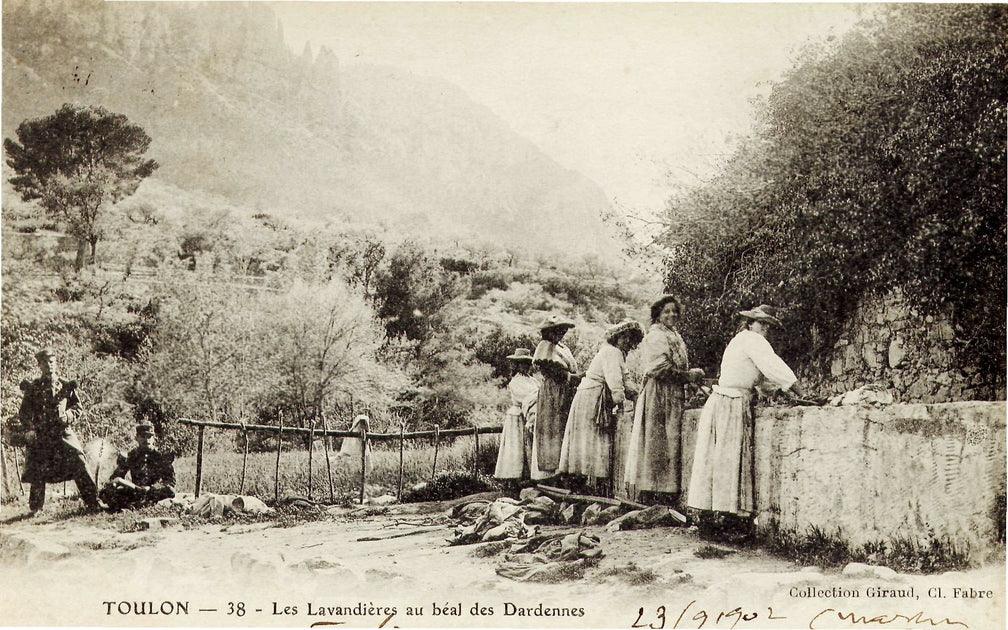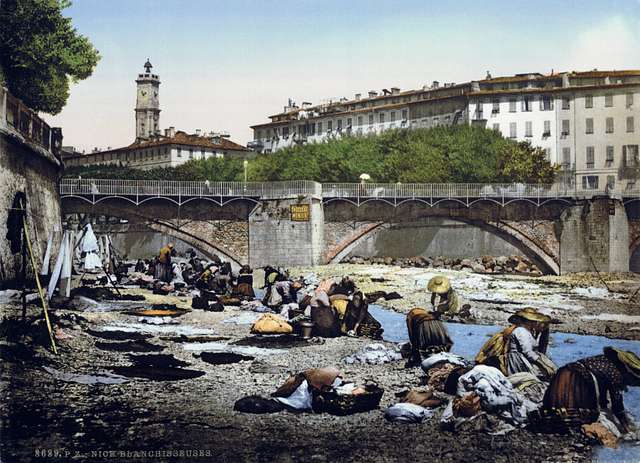
I came across an interesting story on my last trip to the south of France, and thought I would do a little research about the professional laundresses - les bugadières of the 19th century.
In 1843 while Francois Zola the father of Emile built a dam outside of Aix en Provence near Le Tholonet, sixty families from this small village made their living by doing the laundry of the town’s people of Aix en Provence.
Each Monday, carts filled with folded clean laundry would be delivered to the households in Aix, and the dirty laundry collected. On Tuesdays the laundry was sorted and soaked. Overnight the laundry would be piled into a huge wooden tub lined with a large sheet of canvas, wood ash and hot water would be used to clean the clothes.
On Wednesdays it was taken down to the river or the lavoir ( a communal washing area with a stone trough often next to the river or in the village ) where the women would rub, beat and rinse it, a particularly hard job in the winter.
Over the following days the linen was dried by stretching it over bushes to dry and whiten in the sunshine. Once dry and folded it would be delivered back to Aix en Provence the next Monday. By 1893 forty families still made their living in this way.
You will still find a lavoir in most Provencal villages, they are usually beautifully restored but no longer in use. As you can imagine, I do a lot of laundry to get my textiles ready for sale and this story certainly makes me appreciate my washing machine.



